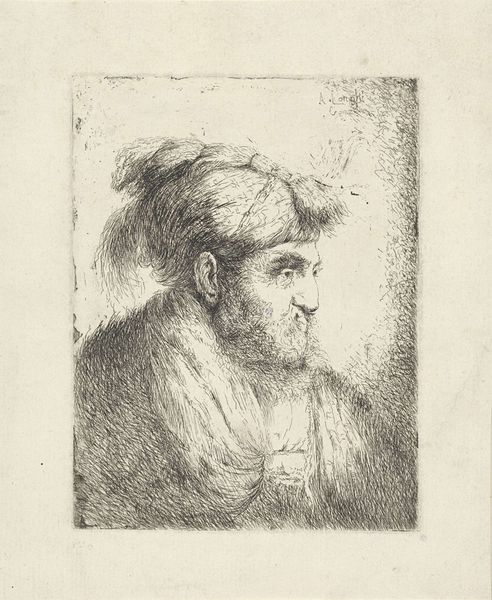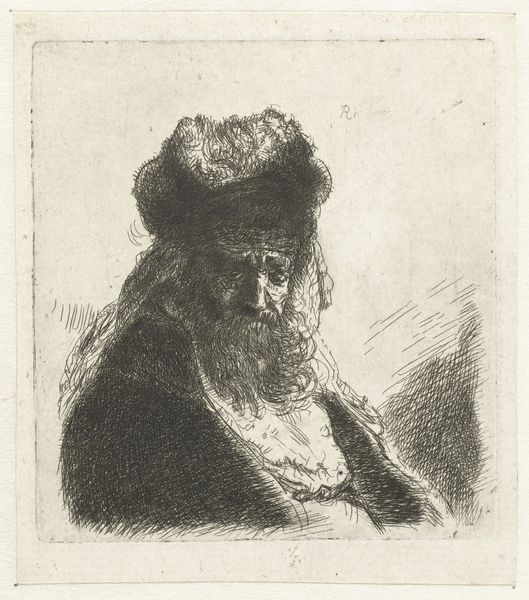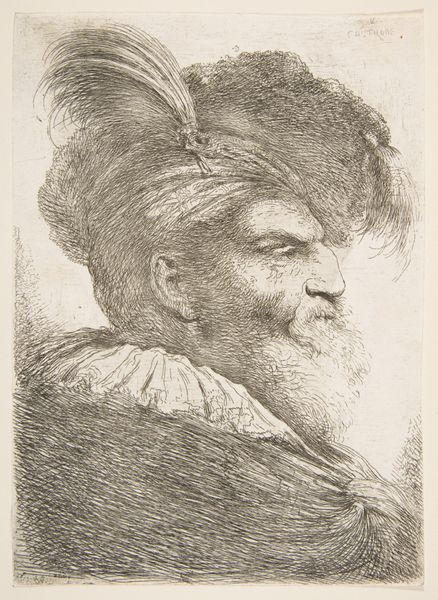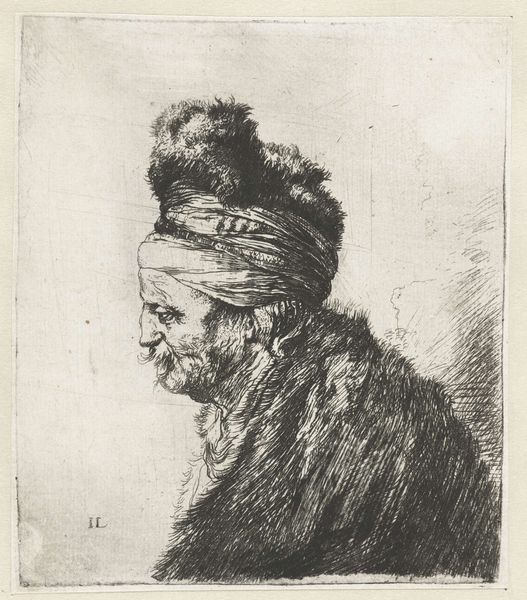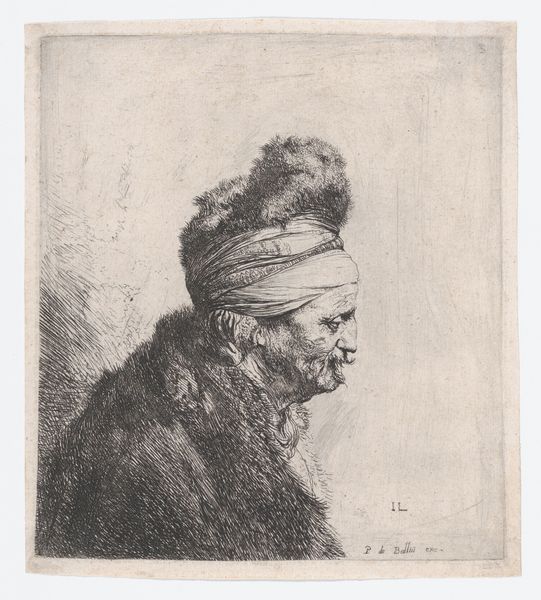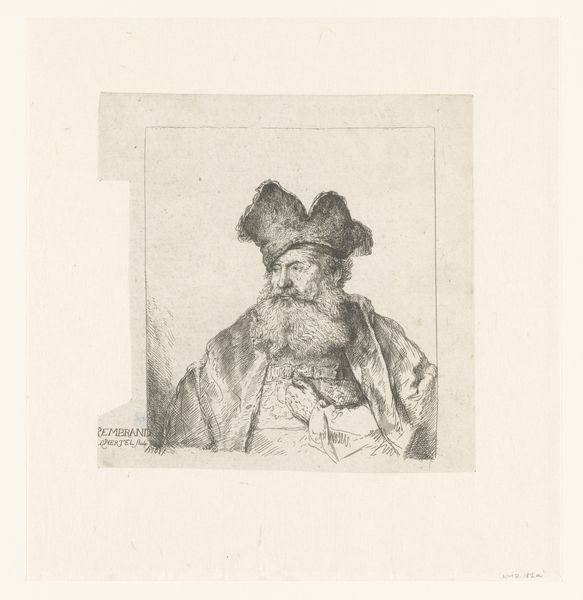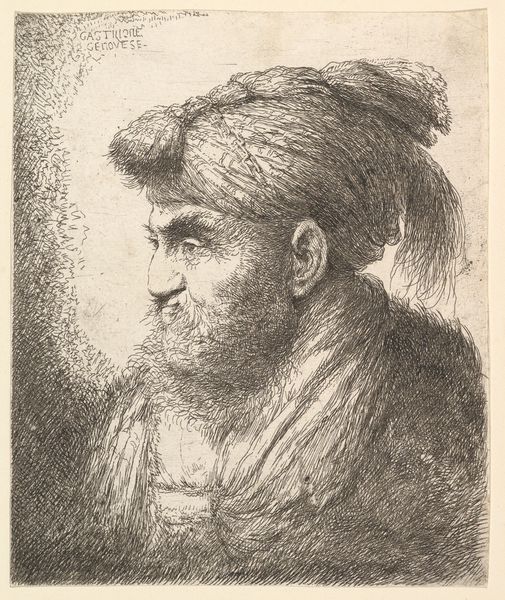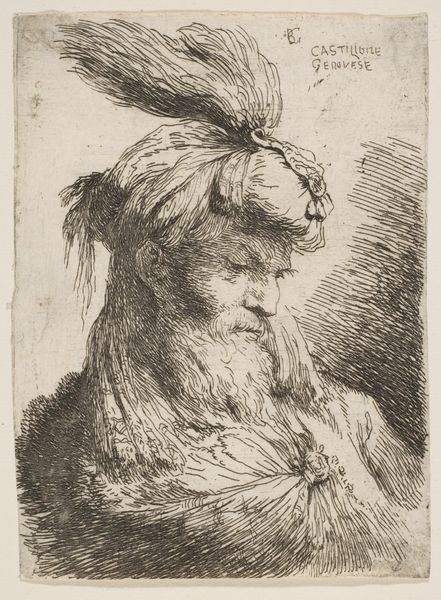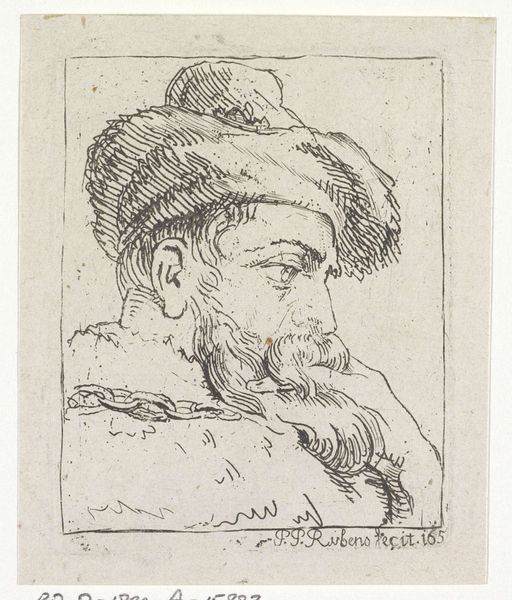
Dimensions: height 195 mm, width 149 mm
Copyright: Rijks Museum: Open Domain
Curator: Immediately, I’m drawn to the striking detail in the hatching. It’s really quite arresting. Editor: It’s the portrait, isn’t it, that grabs you? We’re looking at “Man met gevederde baret,” which translates to “Man with feathered beret,” a drawing made via etching and intaglio. Attributed to Alessandro Longhi, its creation falls somewhere between 1743 and 1813. The artwork now resides in the Rijksmuseum. Curator: Absolutely the beret is drawing my eyes, such an interesting accessory for a man of that time. Feathers often stood for courage, and virility, quite the fashion statement. Editor: Fashion statement indeed! Though this image appears deceptively simple at first glance, in its time, printed portraits circulated widely. Alessandro Longhi came from a family of Venetian painters, his portraits captured powerful social and cultural narratives. Prints allowed those narratives to spread quickly, establishing identities. Curator: That is really so true; it has power, and his expression suggests something further… Maybe introspection? Do you see how the weight of the lines deepens around his eyes, giving a shadow over his brow? Editor: The very mark of wisdom, it almost reads as apprehension. Perhaps a world-weariness? But that beret complicates it all – is this a leader or a dreamer? His fashion indicates wealth and a certain standing, no? Curator: Undeniably. It certainly shifts my perspective on him. It suggests someone participating actively in society, rather than a philosopher in isolation. It humanizes his seriousness. Editor: And thinking about the power of circulated imagery at this time, perhaps the gravity is simply what Longhi considered appropriately dignified, projecting an image befitting his subjects’ expectations? Curator: Exactly! These pieces act as powerful reflectors of societal aspiration. Well, looking at this piece again, it is much richer than I saw at first blush! Editor: Yes, and the impact of portraits like this really goes beyond merely representing a face; it's about understanding an era's self-perception and Longhi's participation in it.
Comments
No comments
Be the first to comment and join the conversation on the ultimate creative platform.
